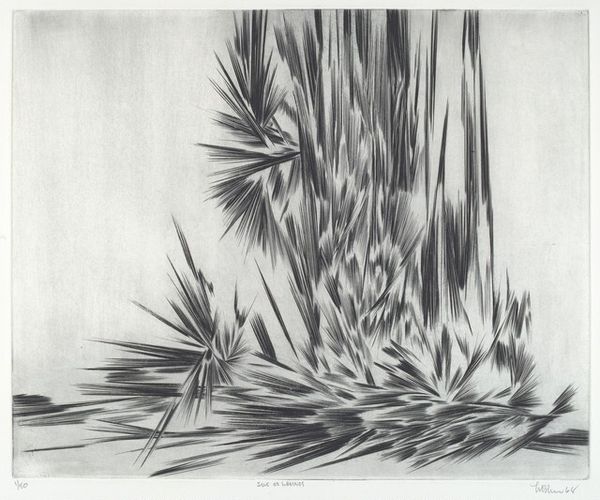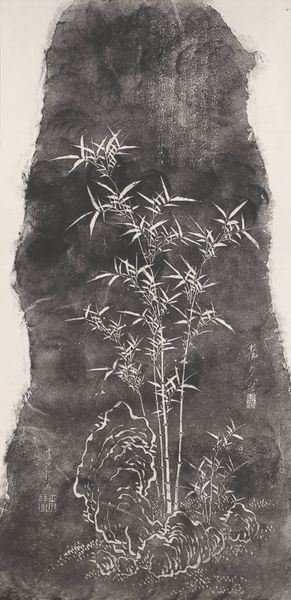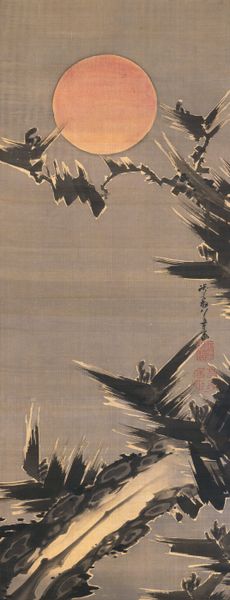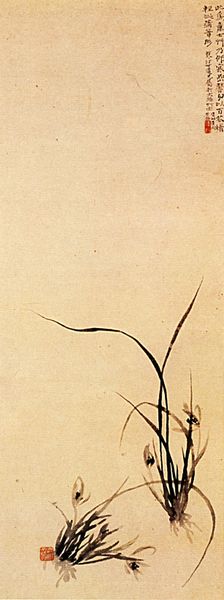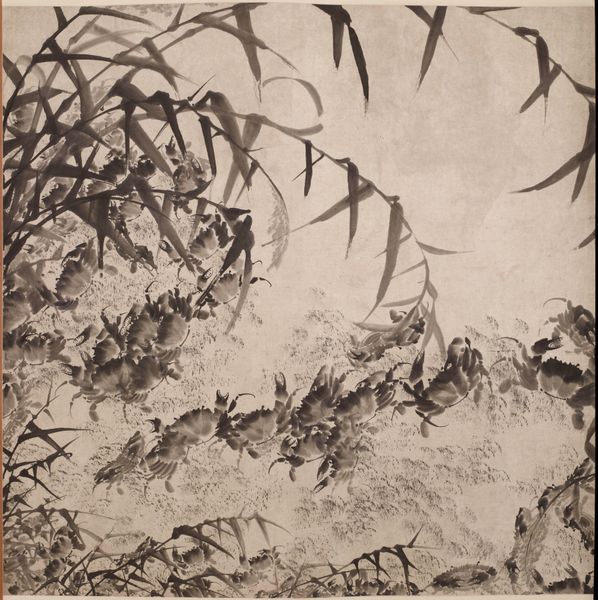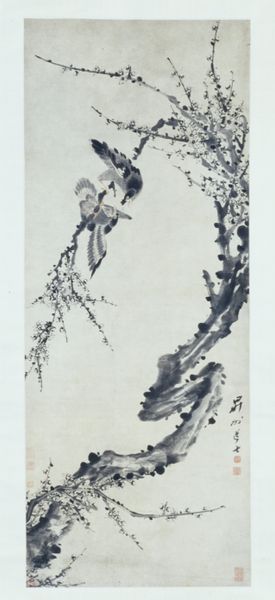
paper, ink-on-paper, hanging-scroll, ink
#
asian-art
#
incomplete sketchy
#
landscape
#
japan
#
paper
#
ink-on-paper
#
hanging-scroll
#
ink
#
orientalism
#
line
#
watercolor
#
realism
Dimensions: 43 3/16 × 14 11/16 in. (109.7 × 37.31 cm) (image)73 3/4 × 20 7/8 in. (187.33 × 53.02 cm) (mount, without roller)
Copyright: Public Domain
Curator: I find myself immediately drawn to the stark contrast between the delicate bamboo and the imposing rock in this hanging scroll. There’s an almost calligraphic quality to the lines. Editor: Yes, "Bamboo and Rock," created in 1747 by Gion Nankai, embodies a beautiful tension. Executed with ink on paper, its materials reflect the scholar-artist’s resources and techniques common to the period, emphasizing a harmony with nature through mindful use of basic materials and tools available to a growing population interested in art. Curator: It feels as though Nankai captures a very specific, fleeting moment. The wind rustling through the bamboo, perhaps, or the cool shade offered by the rock. What resonates deeply is how those materials speak to cultural values, as paper, ink, and the hanging scroll format underscore the work’s intent as both art and potential contemplative aid. It goes beyond mere landscape, I think, in ways we need to acknowledge. Editor: Exactly! And if we think about Nankai's historical context, he, a scholar-artist, painted during a rigid class structure within Japan. These stark black strokes in ink became a political act. Note the minimalist landscape - this becomes not just a scene but a statement. There is, perhaps, a longing for a return to natural simplicity against an elaborate backdrop of complex political bureaucracy. Curator: So the artist himself—his own labor in making—became a statement, through ink. These landscapes aren't merely aesthetic pursuits, they carry a lot of emotional and societal weight. I mean, the simplicity of form here only underscores its deliberate character, while pushing us to see the ways craft elevates common materials. It brings new questions about elitism in art making, doesn't it? Editor: Precisely. "Bamboo and Rock" uses those elemental materials and compositional simplicity to express socio-political resistance through art that emphasizes resilience and independence in a restrictive world, something we continue to discuss and negotiate. What was the purpose, who consumed the work? Curator: In a way, seeing it now reminds me that every artist grapples with those limitations, responding through both form and material to social contexts that continue to echo even today. Editor: I concur. Contemplating how these two components interlock reveals the work's continuing relevance.
Comments
No comments
Be the first to comment and join the conversation on the ultimate creative platform.


